Subfamily Centropominae Higher classification Centropomidae Order Perciformes | Family Centropomidae Scientific name Centropomus Phylum Chordata Rank Genus | |
 | ||
Similar Common snook, Centropomus parallelus, Centropomidae, Cynoscion, Perciformes | ||
Centropomus Lacépède, 1802, is a genus of predominantly marine fish in family Centropomidae of order Perciformes. The type species is Centropomus undecimalis, the common snook. Commonly known as snooks or róbalos, the Centropomus species are native to tropical and subtropical waters of the western Atlantic and eastern Pacific Oceans.
Contents
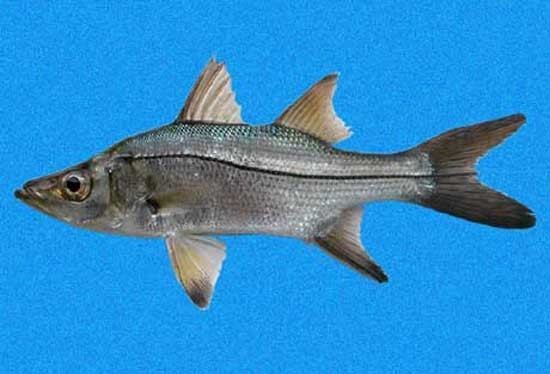
The snook species range in maximum length from about 35 cm (14 in) to some 140 cm (4 ft 7 in), with maximum recorded weights of 1.0 – 26 kg (2.2 – 57 lb).

Occurring in a variety of habitats ranging from coral reefs to estuaries and mangrove swamps, the snooks are carnivorous, feeding primarily on crustaceans and other fishes.
Many of the snooks are important as commercial food fish and as game fish.
The generic name Centropomus derives from the Greek κέντρον (centre, in this sense "sting") and πώμα (cover, plug, operculum).
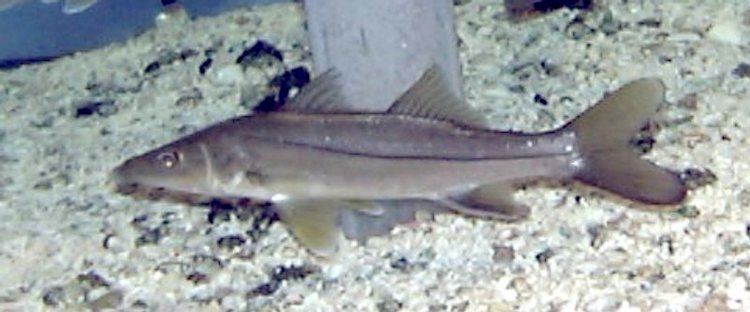
‘Róbalo’ or snook are world-renowned game fish of the Centropomidae family – genus Centropomus that are much sought after by fly fishing enthusiasts and sportfishing charters. Six Atlantic and six Pacific Ocean species are currently recognized as scientifically valid. All are known to inhabit Central America and all are excellent gamefish. There is no evidence found of the individual species crossing from the Atlantic to the Pacific Ocean or vice versa through the Panama Canal. All Robalo or snook species are capable of inhabiting both fresh and saltwater and are known to seasonally occupy Gatun Lake, which forms a water bridge connecting the Atlantic and Pacific Oceans as an integral part of the Panama Canal. Of the twelve species only 4 are known to reach sizes in excess of 10 lbs. – two Atlantic Ocean species (Centropomus undecimalis and Centropomus poeyi) and two Pacific Ocean species (Centropomus viridis and Centropomus nigrescens). The eight species of smaller Robalo usually grow to less than 6 lbs. and can be readily distinguished by from the four larger species by their noticeably longer anal spine, anal fin configuration and body shape. The four large species are immediately recognizable by their more streamlined appearance given by the longer narrower body shape. Many individual species of Robalo bear a close resemblance to one another although they may be from the same or different oceans so identification is best left up to experts. The two Atlantic Ocean large Robalo species (Centropomus undecimalis and Centropomus poeyi) are virtually identical in appearance. They can usually only be distinguished by the number of gill rakers each possesses. The Robalo or common snook (Centropomus undecimalis) commonly has eleven to thirteen non-rudimentary gill rakers and the Mexican snook (Centropomus Poeyi) is most often found to possess fifteen to eighteen non-rudimentary gill rakers. The Pacific Ocean “Robalo Ñato” or white snook (Centropomus viridis) is also a dead ringer for the common snook (Centropomus undecimalis). The distinguishing feature is also the non-rudimentary gill raker count with thirteen to fifteen for the white snook (Centropomus Viridis). They act, breed, grow and fight virtually the same. Curiously, laboratory reared specimens of the common snook (Centropomus undecimalis) showed meristic variations in vertebrae, fin ray and gill raker numbers not observed in specimens from the wild. These variations are suspected to be due to diet and growth rates. Large Robalo caught in Lake Gatun invariably cause a wealth of confusion. The IGFA requires verification of the species by a designated authority for world record claims. The two Pacific Ocean species of large Robalo (Centropomus viridis and Centropomus nigrescens) are somewhat easier to distinguish.

The ‘Robalo Redondo’ or black snook (Centropomus nigrescens) can be differentiated by three visually apparent characteristics when compared to the ‘Robalo Ñato’ or white snook (Centropomus viridis):
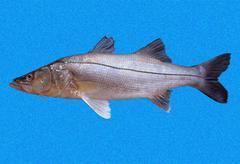
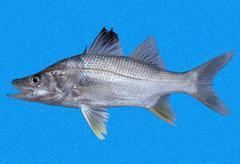
Species
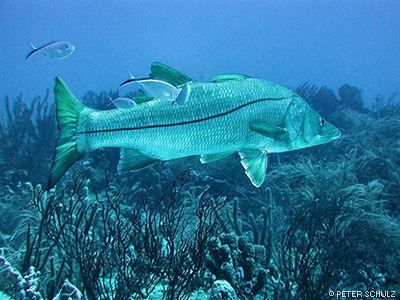
Trivia
The United States Navy submarines named USS Robalo and USS Snook are named for the common snook.
